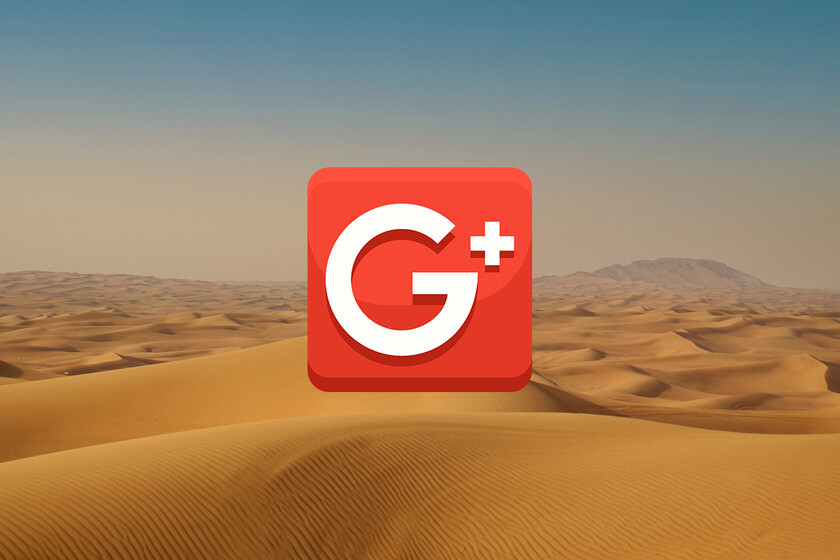Google+ has been Google’s most serious attempt at social media to date. a decade ago, It looked like Google+ was going to devour the world and play a major role as Google’s social layer, as a social network, and as an important part of Android. This was not the case.
We review the tragic story of Google+, a classic example of Google’s usual social and communication practices, as well as the legacy that left us in our Android phones.
Suddenly Google+ (2011)
Google had flirted with social networks before, like Google Friend Connect, the last Google Buzz (which didn’t make a lot of buzz, let’s say) or Orkut, which survived longer than expected in Brazil, but all these projects have paled. comparison with the ambitions of Google+ we met in 2011.
Google+ was Google’s most ambitious social bet, trying to eclipse Facebook
Google+ has generated some buzz when it was launched, because Google chose to use the Gmail formula: invitations to enter in this alternative to Facebook or Twitter. At the time, both networks were filled with people moving to Google+ for this or that reason.
Google+ came to Android as an app on day one and, all things considered, it was a pretty ugly and poorly organized appwith a place to see the news (o flow), the chat, your profile, your photos and the famous circles, which were nothing more than lists of friends that you could use to set up your privacy.

Google+ in 2011
Essentially, Google+ tried to be similar to Facebook in terms of presentation but invited you to share publicly, like on Twitter, while serving as the social layer of all Google appsenriching a user profile which until then consisted of a name, a photo and nothing else.
The app has been quick to improve its appearance with successive redesigns (which have become almost obsessive, arriving every year), while video calls to meet (or hang out) eventually became in a separate app, Hangoutsthough that’s another tragic story for another day.
Google+ Everywhere (2012 – 2013)

Google tried to put Google+ in the soup
The launch of Google+ made Zuckerberg quite nervous, who reacted by improving Facebook with inspired news and Google also stepped on the gas to keep the momentum going. The next year the social component of Google+ enhanced with themes, hashtags, communities, and events, among other new features.
On another side, Google+ has started to invade Android phones. Google+ itself was pre-installed and it didn’t come on its own, but its messaging part was added as an additional icon called Messenger which later mutated into Hangouts. As if that weren’t enough, Google+ Local arrived, heir to Google Places.
Google saw Android as the perfect place to expand the influence of Google+ and many apps and many integrations with apps have arrived
Lots of apps and lots of integrations. Google wanted to put Google+ wherever possible, which caused quite a bit of controversy, in particular on the fact that it was necessary to use Google+ to comment on YouTube. Google+ has become your Google account profile, and with that excuse, Google has “forced” you to fill out your Google+ profile, whether you like it or not. Here are some of the integrations that have arrived:
The Beginning of the End (2014)
Three years later, the dating stage was starting to disappear and users were getting a bit fed up with finding Google+ in their soup. Google+ seemed to have identity issues and this internal crisis became evident when The father of Google+ left GoogleVic Gundotra.
The march of one of the creators of Google+ began the decline of the social network
Simultaneously, at Google, they suddenly realized that having four simultaneous messaging services is not ideal: Google Talk, Google Voice, Google+ Messenger and Hangouts. App merger rumors started coming in and so did the cuts: Google+ games said goodbye.

It was Google+ after its umpteenth redesign, in 2014
At this moment Google+ started to feel shut down, although it still received improvements here and there and periodic overhauls to its interface. It was the calm before the storm or, at least, before we started cutting up the social network to reuse the pieces.
Exploded view (2015 – 2018)

From Google+ Photos, we moved to Google Photos, a separate app
In 2015, it is already clear that Google has slowed down with Google+ and therefore its ambitions. They no longer seek to remove the site from Facebook, but rather present it as a social layer of the Google ecosystem. What was tied to Google+ two years ago is starting to untie
The End of Agony (2018)

In 2018, Google announced a “big overhaul” of Google+, but what finally happened was the announcement that it would be shut down
With the previous scenario, in 2018 Google+ was in no man’s land: it was neither a social network capable of dealing with Facebook nor Google’s shared social profile. It survived as a niche social network: much loved by some, ignored by the rest.
For many, Google+ was in a coma, but then-social network manager Leo Deegan announced a complete overhaul of Google+ from the ground up, not so much in terms of functions, but in its code. Does this mean that Google hasn’t abandoned Google+ yet? No.
In 2018, Google announced the shutdown of Google+ after discovering a security issue that exposed the data of millions of users.
In February, Google announced that it is redoing its app and in October, he announced the closure of the social network arguing of a security problem too complex to solve given the adoption of the social network. Put simply, it wasn’t worth it for Google to continue maintaining an app with almost no users.

This is what Google+ looked like when it was announced to be shut down in 2018
The closure of Google+ was scheduled for the end of August but postponed to April 2, 2019although the business version survived by becoming Currents, which is actually the app that replaced Google+ in its listing on the Play Store.
Google+ left behind Google Photos, which is in good health, as well as Google Hangouts, which suffered its own desert journey and eventually died this year. Some of your social features are now part of your Google profile, and others, like sharing your location with friends, have been integrated into other apps, like Google Maps.
Table of Contents









